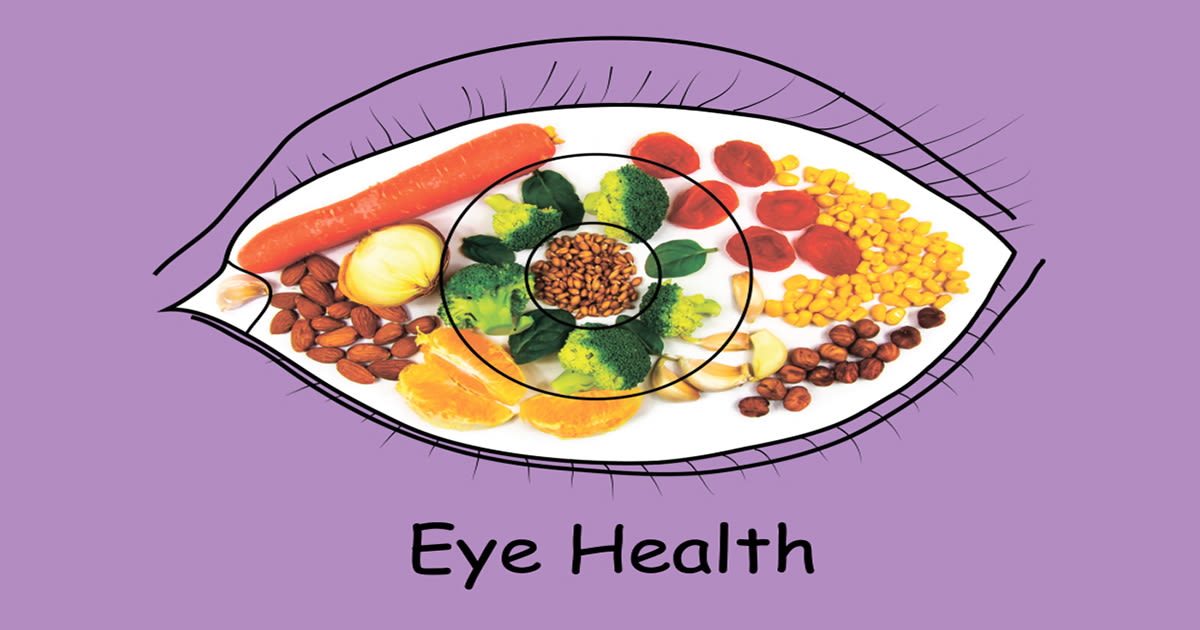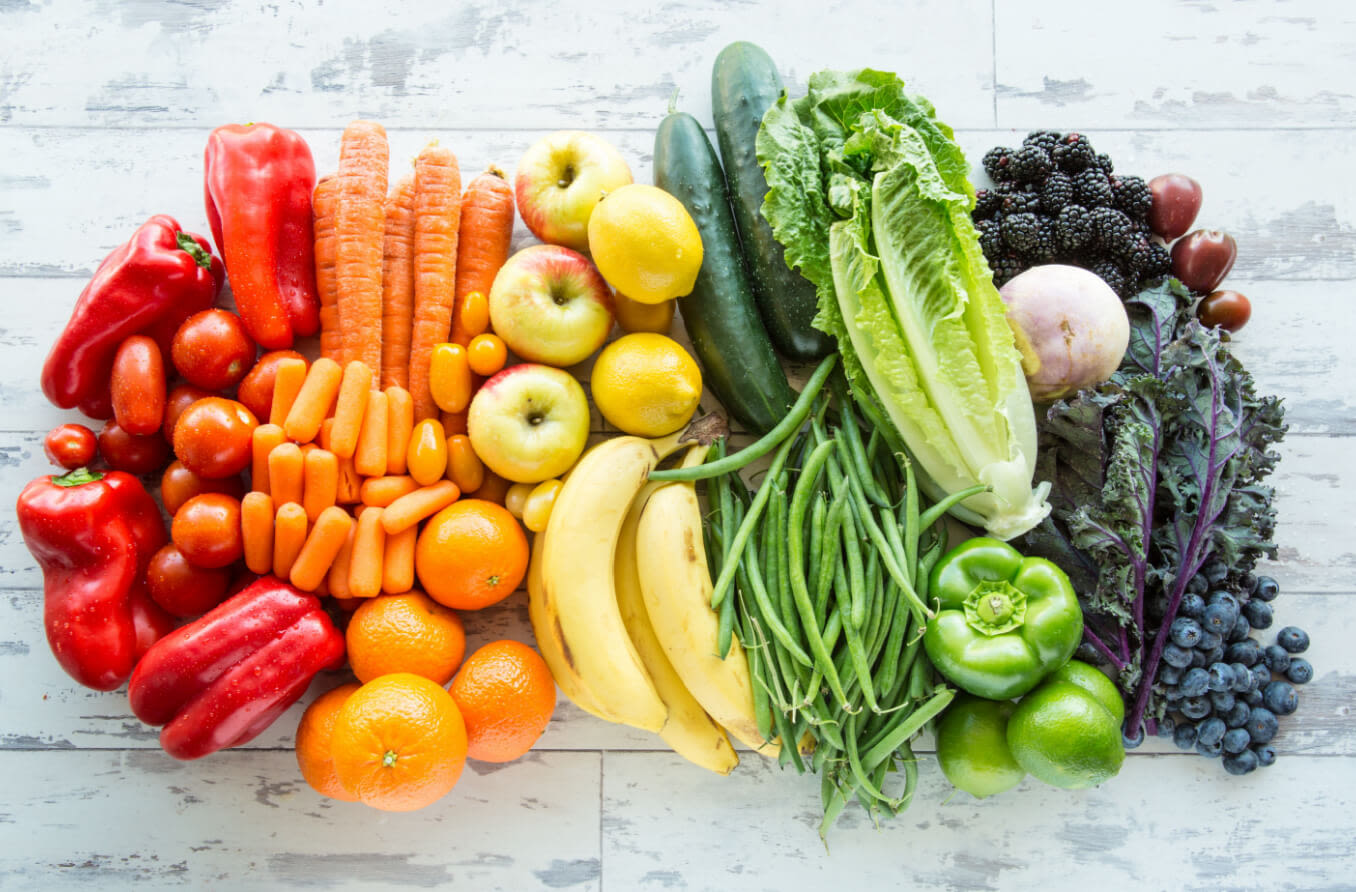Nutrition for healthy eyes

Research suggests that antioxidants and other important nutrients may reduce your risk of cataracts and macular degeneration. Specific antioxidants can have additional benefits as well; for example, vitamin A protects against blindness, and vitamin C may play a role in preventing or alleviating glaucoma.
Omega-3 essential fatty acids appear to help the eye in a variety of ways, from alleviating symptoms of dry eye syndrome to guarding against macular damage.
Eye Benefits Of Vitamins And Micronutrients
The following vitamins, minerals and other nutrients have been shown to be essential for good vision and may protect your eyes from sight-robbing conditions and diseases.

A healthy diet for your eyes should include plenty of colorful fruits and vegetables.
Incorporating the following foods in your diet will help you get the Recommended Dietary Allowance (RDA) of these important eye nutrients. Established by the Institute of Medicine (National Academy of Sciences), the RDA is the average daily dietary intake level of a nutrient sufficient to meet the requirements of nearly all healthy individuals in a specific life stage and gender group.
While the RDA is a useful reference, some eye care practitioners recommend higher daily intakes of certain nutrients for people at risk for eye problems.
(In the following list, mg = milligram; mcg = microgram (1/1000 of a mg) and IU = International Unit.)
Beta-carotene
Eye benefits of beta-carotene: When taken in combination with zinc and vitamins C and E, beta-carotene may reduce the progression of macular degeneration.
Food sources: Carrots, sweet potatoes, spinach, kale, butternut squash.
RDA: None (most supplements contain 5,000 to 25,000 IU).
Bioflavonoids (Flavonoids)
Eye benefits of bioflavonoids: May protect against cataracts and macular degeneration.
Food sources: Tea, red wine, citrus fruits, bilberries, blueberries, cherries, legumes, soy products.
RDA: None.
Lutein and Zeaxanthin
Eye benefits of lutein and zeaxanthin: May prevent cataracts and macular degeneration.
Food sources: Spinach, kale, turnip greens, collard greens, squash.
RDA: None.
Omega-3 Fatty Acids
Eye benefits of omega-3 fatty acids: May help prevent macular degeneration (AMD) and dry eyes.
Food sources: Cold-water fish such as salmon, mackerel and herring; fish oil supplements, freshly ground flaxseeds, walnuts.
RDA: None; but for cardiovascular benefits, the American Heart Association recommends approximately 1,000 mg daily.
Selenium
Eye benefits of selenium: When combined with carotenoids and vitamins C and E, may reduce risk of advanced AMD.
Food sources: Seafood (shrimp, crab, salmon, halibut), Brazil nuts, enriched noodles, brown rice.
RDA: 55 mcg for teens and adults (60 mcg for women during pregnancy and 70 mcg when breast-feeding).
Vitamin A
Eye benefits of vitamin A: May protect against night blindness and dry eyes.
Food sources: Beef or chicken liver; eggs, butter, milk.
RDA: 3,000 IU for men; 2,333 IU for women (2,567 IU during pregnancy and 4,333 IU when breast-feeding).
Vitamin C
Eye benefits of vitamin C: May reduce the risk of cataracts and macular degeneration.
Food sources: Sweet peppers (red or green), kale, strawberries, broccoli, oranges, cantaloupe.
RDA: 90 mg for men; 70 mg for women (85 mg during pregnancy and 120 mg when breast-feeding).
Vitamin D
Eye benefits of vitamin D: May reduce the risk of macular degeneration.
Food sources: Salmon, sardines, mackerel, milk; orange juice fortified with vitamin D.
RDA: None, but the American Academy of Pediatrics recommends 400 IU per day for infants, children and adolescents, and many experts recommend higher daily intakes for adults.
The best source of vitamin D is exposure to sunlight. Ultraviolet radiation from the sun stimulates production of vitamin D in human skin, and just a few minutes of exposure to sunlight each day (without sunscreen) will insure your body is producing adequate amounts of vitamin D.
Vitamin E
Eye benefits of vitamin E: When combined with carotenoids and vitamin C, may reduce the risk of advanced AMD.
Food sources: Almonds, sunflower seeds, hazelnuts.
RDA: 15 mg for teens and adults (15 mg for women during pregnancy and 19 mg when breast-feeding).
Zinc
Eye benefits of zinc: Helps vitamin A reduce the risk of night blindness; may play a role in reducing risk of advanced AMD.
Food sources: Oysters, beef, Dungeness crab, turkey (dark meat).
RDA: 11 mg for men; 8 mg for women (11 mg during pregnancy and 12 mg when breast-feeding).
In general, it's best to obtain most nutrients through a healthy diet, including at least two servings of fish per week and plenty of colorful fruits and vegetables.
If you plan to begin a regimen of eye vitamins, be sure to discuss this with your optometrist or ophthalmologist. Taking too much of certain vision supplements can cause problems, especially if you are taking prescription medications for health problems.
Bon appétit!
Anshel, Jeffrey. Smart Medicine for Your Eyes. Square One Publishers, 2011.
Micronutrient Resource Center, Linus Pauling Institute at Oregon State University. Accessed online at LPI/OSU website, August 2010.
Associations between age-related nuclear cataract and lutein and zeaxanthin in the diet and serum in the Carotenoids in the Age-Related Eye Disease Study (CAREDS), an ancillary study of the Women's Health Initiative. Archives of Ophthalmology. March 2008.
Topical omega-3 and omega-6 fatty acids for treatment of dry eye. Archives of Ophthalmology. February 2008.
Dietary carotenoids, vitamins C and E, and risk of cataract in women. Archives of Ophthalmology. January 2008.
Association between vitamin D and age-related macular degeneration in the Third National Health and Nutrition Examination Survey, 1988 through 1994. Archives of Ophthalmology. May 2007.
Long-term nutrient intake and 5-year change in nuclear lens opacities. Archives of Ophthalmology. April 2005.
Plasma antioxidant vitamins and carotenoids and age-related cataract. Ophthalmology. November 2001.
Page published on Wednesday, February 27, 2019






